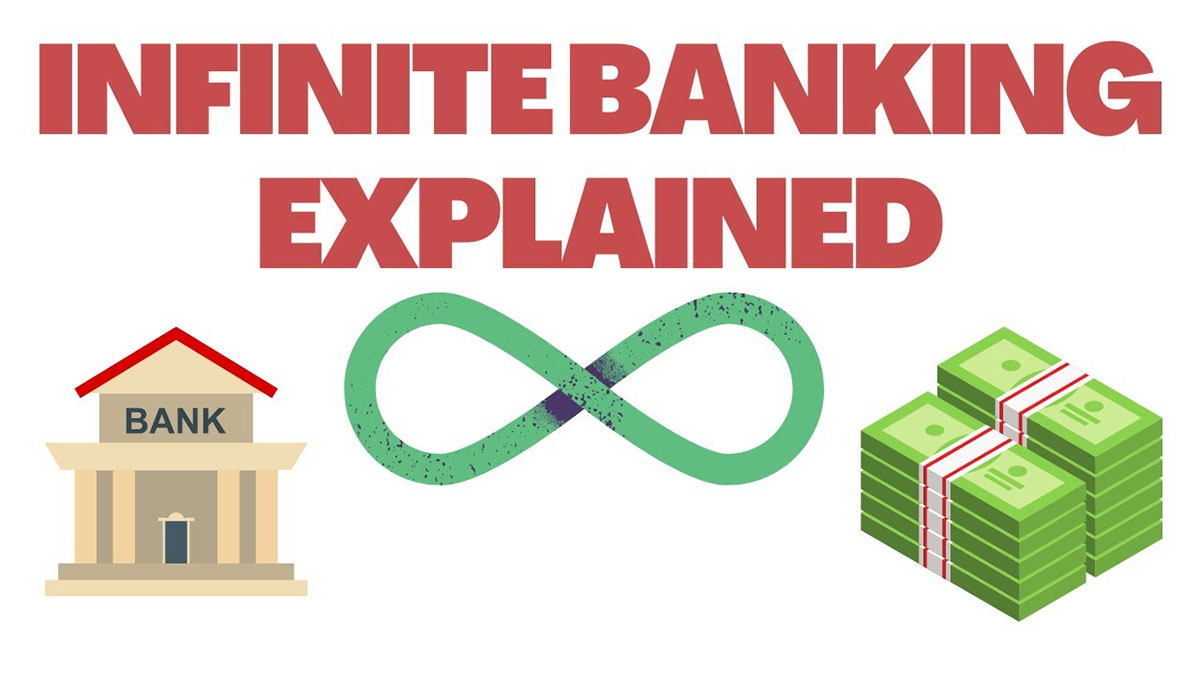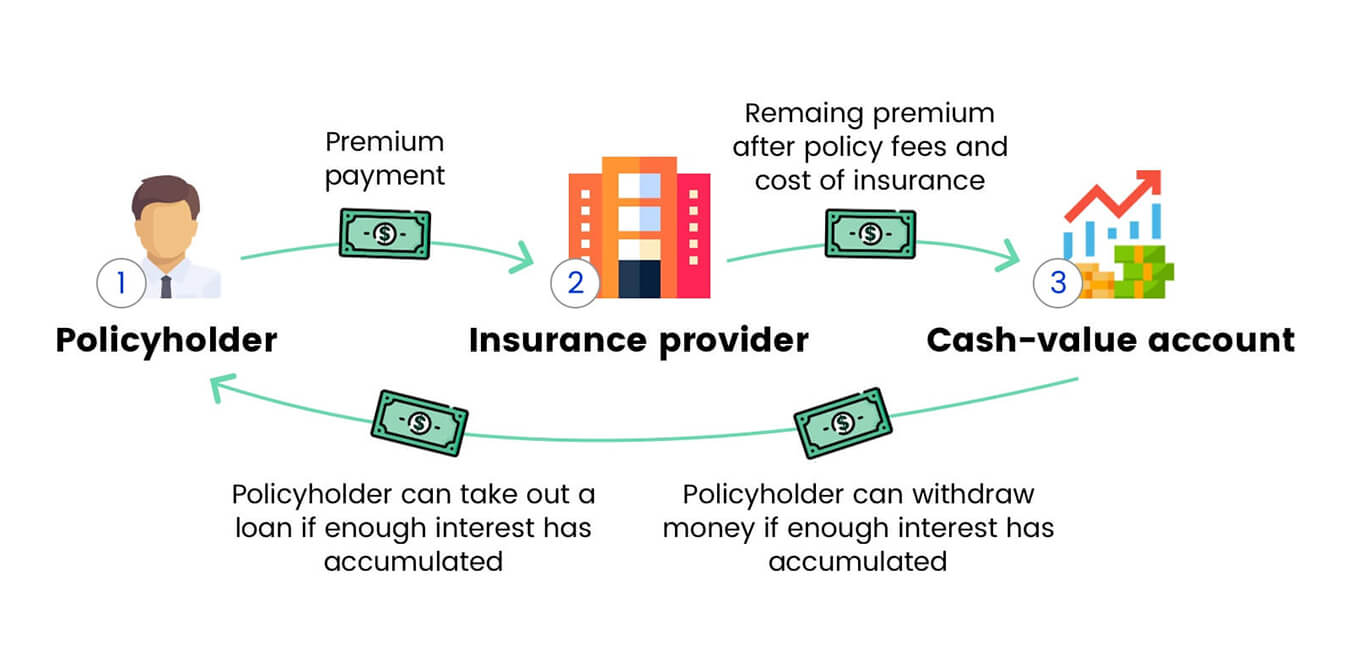

Finance
What Is Credit Policy
Published: January 12, 2024
Learn about credit policy in finance and understand its importance in managing financial risk. Discover how it influences lending decisions and helps determine creditworthiness.
(Many of the links in this article redirect to a specific reviewed product. Your purchase of these products through affiliate links helps to generate commission for LiveWell, at no extra cost. Learn more)
Table of Contents
- Introduction
- Definition of Credit Policy
- Objectives of Credit Policy
- Components of Credit Policy
- Factors Considered in Credit Policy
- Benefits of a Well-Defined Credit Policy
- Challenges in Implementing Credit Policy
- Steps to Develop an Effective Credit Policy
- Examples of Credit Policies in Different Industries
- Conclusion
Introduction
Welcome to the world of finance, where managing credit plays a vital role in the success of businesses. In order to ensure a smooth cash flow and enable growth, organizations need to have a well-defined credit policy in place. A credit policy outlines the rules and guidelines that govern the extension of credit to customers.
Whether you are a small business or a multinational corporation, having a credit policy is crucial for maintaining financial stability and reducing the risk of bad debt. By setting clear expectations for customers, businesses can effectively manage their accounts receivable and minimize the chance of payment defaults.
A credit policy acts as a roadmap for the credit department, providing a framework for decision-making and ensuring consistency in credit evaluations. It helps in determining the creditworthiness of customers, establishing credit limits, defining payment terms, and outlining the collection procedures in case of delinquency.
Additionally, a credit policy serves as a communication tool between the sales and finance teams. It enables sales representatives to understand the credit terms and conditions, which they can then communicate to customers, avoiding any confusion or disputes.
In this article, we will delve deeper into the concept of credit policy, its objectives, components, factors to consider, benefits, challenges in implementation, and steps to develop an effective credit policy. We will also explore real-world examples of credit policies in different industries to gain a better understanding of their practical application.
So, if you are ready to enhance your finance knowledge and learn how to optimize your credit management strategies, let’s dive into the world of credit policies!
Definition of Credit Policy
A credit policy can be defined as a set of guidelines and procedures established by a business to govern its credit operations. It outlines the terms and conditions under which credit will be granted to customers, including credit limits, payment terms, collection procedures, and credit evaluation criteria.
The credit policy serves as a framework for the credit department to assess the creditworthiness of customers and make informed decisions about granting credit. It helps in determining the level of risk associated with extending credit to a particular customer and allows businesses to protect themselves from potential bad debts.
The credit policy is typically developed by the finance team in collaboration with the sales and marketing departments. It takes into consideration various factors such as the industry in which the business operates, the company’s risk tolerance, and the financial stability of customers.
By having a well-defined credit policy in place, businesses can ensure consistency in their credit management processes and avoid any ad-hoc decision-making. It provides a documented reference for credit officers and helps in maintaining an organized approach towards credit evaluation and management.
A credit policy may differ from one organization to another, depending on the nature of the business and its specific requirements. However, it generally includes guidelines on credit limits, credit terms, credit evaluation procedures, collection policies, and customer communication protocols.
Overall, a credit policy is a valuable tool that helps businesses maintain control over their credit operations, mitigate credit risks, and protect their cash flow. It sets the foundation for a healthy and sustainable credit management system, enabling businesses to make informed decisions about their customers’ creditworthiness and ensuring timely payments.
Objectives of Credit Policy
The primary objectives of a credit policy are to establish clear guidelines and procedures for managing credit operations and to minimize the risk of bad debt. Let’s delve into the key objectives of a credit policy:
- Manage Credit Risk: One of the main objectives of a credit policy is to manage and mitigate credit risk effectively. This involves evaluating the creditworthiness of customers, setting appropriate credit limits, and monitoring credit exposure. By assessing the risk associated with granting credit, businesses can make informed decisions and reduce the chance of defaults and bad debts.
- Promote Consistency: A credit policy ensures consistency in credit decision-making and credit management practices. It establishes clear guidelines for credit evaluation, credit terms, and collection procedures. This consistency helps in building trust with customers and creates a level playing field for all parties involved.
- Ensure Cash Flow Stability: Another objective of a credit policy is to ensure a stable and predictable cash flow for the business. By defining payment terms and enforcing timely collections, the credit policy helps in minimizing delays in receiving payments and improving the overall liquidity of the company.
- Optimize Sales and Profitability: A well-designed credit policy strikes a balance between attracting new customers and mitigating credit risks. It aims to optimize sales and profitability by offering favorable credit terms to creditworthy customers while minimizing the risk of payment defaults. This objective helps in maximizing revenue generation and improving the company’s bottom line.
- Enhance Customer Relationships: The credit policy also focuses on building and nurturing strong customer relationships. By clearly communicating credit terms and conditions, businesses can avoid misunderstandings and disputes with their customers. This objective helps in fostering trust and long-term partnerships with valued customers.
Overall, the objectives of a credit policy revolve around effective credit risk management, consistency in credit operations, cash flow stability, profitability optimization, and customer relationship enhancement. By aligning these objectives, businesses can create a robust credit management framework that supports their financial stability and success.
Components of Credit Policy
A well-developed credit policy consists of several key components that collectively outline the guidelines and procedures for managing credit operations. Let’s explore the main components of a credit policy:
- Credit Evaluation Criteria: This component defines the criteria used to evaluate the creditworthiness of customers. It may include parameters such as credit history, financial stability, industry reputation, and payment behavior. The credit evaluation criteria help in determining whether to grant credit and setting appropriate credit limits for customers.
- Credit Limits: This component specifies the maximum amount of credit that can be extended to customers. Credit limits are set based on various factors, including the customer’s financial health, payment history, and the level of risk the business is willing to take. Defining clear credit limits helps in managing credit exposure and minimizing the risk of default.
- Payment Terms: The payment terms component outlines the terms and conditions for the repayment of credit. It includes details such as the due date, acceptable payment methods, and any applicable discounts or penalties. Defining clear and reasonable payment terms helps in ensuring timely collections and improving cash flow.
- Collection Procedures: This component outlines the procedures to be followed in case of late or non-payment by customers. It includes actions such as email reminders, phone calls, escalation to collections agencies, or legal action if necessary. Defining a systematic and consistent process for collections helps in minimizing bad debts and improves the chances of recovering overdue payments.
- Customer Communication: This component focuses on maintaining effective communication with customers regarding credit-related matters. It includes information on how credit decisions will be communicated, how disputes will be resolved, and how customers can request credit limit increases or changes to payment terms. Clear and transparent communication helps in fostering positive relationships with customers and avoids misunderstandings.
- Documentation and Record Keeping: The credit policy should include guidelines for proper documentation and record keeping related to credit transactions. This component ensures that all relevant information, such as credit applications, agreements, and correspondence with customers, is properly documented and easily accessible. Good record keeping helps in maintaining audit trails and resolving disputes efficiently.
These components collectively form the framework of a credit policy and guide the credit department in managing credit operations effectively. By clearly defining and documenting these components, businesses can ensure consistency, reduce credit risk, and maintain healthy financial relationships with their customers.
Factors Considered in Credit Policy
A credit policy takes into account various factors that help in assessing the creditworthiness of customers and determining the terms and conditions for granting credit. These factors provide insight into the customer’s ability and willingness to make timely payments. Let’s explore some of the key factors considered in a credit policy:
- Credit History: The credit history of a customer plays a vital role in determining their creditworthiness. It includes their past credit experiences, such as loan repayments, payment defaults, and bankruptcy filings. A positive credit history indicates a reliable payment behavior, while a negative credit history may raise concerns about the customer’s ability to meet financial obligations.
- Financial Stability: The financial stability of a customer is an important consideration in a credit policy. It involves analyzing their financial statements, such as income statements, balance sheets, and cash flow statements. Businesses assess the customer’s ability to generate consistent cash flow, meet debt obligations, and maintain a healthy financial position. A financially stable customer is likely to have a lower credit risk.
- Industry Reputation: The reputation of the customer within their industry is also taken into account. This includes considering factors such as their years of operation, market standing, and customer feedback. A customer with a strong industry reputation indicates credibility and reliability, reducing the perceived credit risk.
- Payment Behavior: The payment behavior of the customer with other suppliers is an essential factor in evaluating creditworthiness. Prompt payments to other creditors indicate a responsible payment behavior and suggest a lower credit risk. Businesses may request trade references to gather information about the customer’s payment history with other vendors.
- Collateral: In some cases, businesses may consider collateral as a factor in their credit policy. Collateral can provide additional security for the extension of credit. It could be in the form of real estate, equipment, or other assets that can be liquidated in case of payment default.
- Customer Relationship: The existing business relationship with the customer is also taken into consideration. A long-standing and trustworthy customer relationship may lead to more flexible credit terms and higher credit limits due to a demonstrated track record of timely payments and reliability.
These factors are not exhaustive, and businesses may consider additional factors specific to their industry or circumstances. The ultimate goal is to evaluate the overall creditworthiness of the customer and make informed decisions about credit limits, payment terms, and collection procedures.
By considering these factors and designing a credit policy that aligns with the business’s risk appetite and financial objectives, organizations can effectively manage credit risk, protect cash flow, and build strong relationships with their customers.
Benefits of a Well-Defined Credit Policy
A well-defined credit policy provides numerous benefits for businesses in managing their credit operations and ensuring financial stability. Let’s explore some of the key benefits:
- Risk Mitigation: A well-defined credit policy helps in mitigating the risk of bad debt and payment defaults. By establishing clear guidelines for credit evaluation, credit limits, and collection procedures, businesses can minimize the chances of extending credit to high-risk customers. This helps in protecting the financial health of the company and maintaining a healthy cash flow.
- Consistency in Decision-Making: Having a credit policy ensures consistency in credit decision-making. It provides a framework for evaluating creditworthiness, setting credit limits, and determining payment terms. By following consistent procedures, businesses can build trust with customers and avoid any perception of favoritism or bias in credit decisions.
- Improved Cash Flow: A well-defined credit policy improves cash flow by setting clear payment terms and enforcing timely collections. It helps in reducing payment delays and minimizing the risk of late or non-payment. With better cash flow management, businesses can meet their financial obligations, invest in growth opportunities, and maintain a healthy working capital position.
- Better Customer Relationships: A clear and transparent credit policy helps in fostering better relationships with customers. By communicating credit terms and conditions upfront, businesses can avoid misunderstandings and build trust. Consistent and fair treatment of customers enhances loyalty and encourages timely payments, leading to stronger long-term partnerships.
- Operational Efficiency: A well-defined credit policy streamlines credit operations and improves operational efficiency. It provides guidelines for credit officers to follow in evaluating credit applications, setting credit limits, and managing collections. This reduces the need for ad-hoc decision-making and ensures that credit procedures are aligned with the company’s objectives.
- Enhanced Credit Control: With a credit policy in place, businesses have better control over credit management. They can proactively monitor credit exposure, assess credit risk, and take appropriate measures to mitigate risk. The policy helps in identifying potential issues early on and implementing preventive measures to avoid payment defaults or delinquencies.
Overall, a well-defined credit policy offers businesses multiple benefits, including risk mitigation, consistent decision-making, improved cash flow, better customer relationships, operational efficiency, and enhanced credit control. It provides a structured framework for managing credit operations and contributes to the overall financial health and success of the business.
Challenges in Implementing Credit Policy
Implementing a credit policy can be a complex and challenging task for businesses. While having a well-defined credit policy is crucial, it is important to recognize and address the potential challenges that may arise during the implementation process. Let’s explore some of the common challenges:
- Resistance from Sales Team: One of the primary challenges in implementing a credit policy is resistance from the sales team. Sales representatives often prioritize securing new customers and closing deals over credit risk assessment. It is essential to educate and align the sales team with the credit policy objectives to ensure their cooperation and adherence to the policy.
- Managing Customer Expectations: Implementing a credit policy may require changes to existing credit terms or stricter credit evaluation criteria. This can lead to managing customer expectations and potential resistance. It is crucial to communicate the reasons behind the policy changes and provide clear explanations to customers to maintain transparency and avoid any negative impact on customer relationships.
- Monitoring and Enforcement: Implementing a credit policy requires effective monitoring and enforcement mechanisms. It can be challenging to consistently monitor customer creditworthiness, payment behavior, and adherence to credit terms. Establishing proper systems and processes for monitoring and enforcing the policy is crucial to ensure that the policy is being followed consistently.
- Handling Exceptions: There may be situations where exceptions to the credit policy need to be made. This could be due to special circumstances or opportunities that arise. Handling these exceptions while maintaining the integrity of the policy can be challenging. It is important to have clear guidelines and approval processes in place to address exception scenarios.
- Upgrading Systems and Technology: Implementing a credit policy may require upgrades to existing credit management systems and technology. Businesses need the necessary infrastructure to effectively evaluate credit risk, set credit limits, track customer payment behavior, and manage collections. Ensuring that the systems and technology are capable of supporting the policy is crucial for successful implementation.
- Training and Education: Implementing a credit policy requires training and education of the credit department and other relevant stakeholders. It is important to ensure that the staff understand the policy guidelines, evaluation criteria, and procedural requirements. Regular training and updates are essential to keep the team aligned with the policy objectives and to address any changes or updates to the policy.
Addressing these challenges requires proactive planning, effective communication, and continuous monitoring. By recognizing and anticipating these challenges, businesses can minimize their impact and ensure a smooth implementation of the credit policy, leading to improved credit management and financial stability.
Steps to Develop an Effective Credit Policy
Developing an effective credit policy requires careful planning, thorough analysis, and consideration of various factors specific to the business. Implementing the following steps can help in creating a well-defined and practical credit policy:
- Define Objectives: Clearly define the objectives of the credit policy, taking into account the organization’s risk tolerance, financial goals, and customer requirements. Determine what you aim to achieve through the policy, such as reducing credit risk, improving cash flow, or enhancing customer relationships.
- Assess Risk Tolerance: Evaluate the level of risk the business is willing to accept. This involves determining the maximum exposure to credit risk, setting credit limits based on the business’s financial capacity, and establishing risk assessment criteria to evaluate customer creditworthiness. This step helps in defining acceptable levels of risk and mitigating potential bad debts.
- Evaluate Credit Evaluation Process: Develop a systematic credit evaluation process that includes collecting the necessary information from customers, analyzing their creditworthiness based on predefined criteria, and assigning appropriate credit limits. Consider utilizing credit scoring models or credit reports to streamline the evaluation process and ensure consistency.
- Define Credit Terms and Conditions: Establish clear credit terms and conditions, including payment terms, interest rates, late payment penalties, and any applicable discounts or incentives. Consider industry standards and customer preferences while creating these terms to strike a balance between attracting customers and mitigating credit risk.
- Create Collection Procedures: Develop a step-by-step collection process for customers with delinquent payments. Clearly define the timelines, actions, and communication channels to be followed for different stages of collections. Include provisions for negotiation, dispute resolution, and escalation to collections agencies if necessary.
- Document the Policy: Document the credit policy in a comprehensive and easily understandable format. Make sure it is accessible to the relevant stakeholders, including the credit department, sales team, and senior management. Regularly review and update the policy to reflect any changes in business practices, industry regulations, or customer needs.
- Train and Educate Staff: Provide training and education to the credit department and other relevant staff members about the credit policy. Ensure that they understand the policy guidelines, evaluation criteria, and procedural requirements. Regularly update staff on any changes to the policy to ensure consistency in decision-making and adherence to the policy.
- Monitor and Evaluate: Continuously monitor and evaluate the effectiveness of the credit policy. Track key performance indicators such as average days sales outstanding (DSO), bad debt ratio, and collection effectiveness index. Regularly assess the policy’s impact on the company’s financial health and make adjustments as needed.
By following these steps, businesses can develop an effective credit policy that aligns with their objectives, helps in managing credit risk, and supports financial stability. An effective credit policy sets the foundation for sound credit management practices and ensures a consistent and structured approach to evaluating and managing customer creditworthiness.
Examples of Credit Policies in Different Industries
Credit policies can vary across industries based on factors such as market dynamics, customer behavior, and risk tolerance. Let’s explore a few examples of credit policies in different industries:
- Retail: In the retail industry, credit policies often focus on managing credit risk while attracting and retaining customers. Such policies may include offering store credit cards with specific credit limits, promotional financing options, and loyalty programs. The credit evaluation process may involve checking customers’ credit history, income verification, and setting appropriate credit limits based on their spending patterns and creditworthiness.
- Manufacturing: Credit policies in the manufacturing industry typically involve managing credit risk associated with supplying products to customers. These policies may stipulate credit terms, such as net 30 days, and have evaluation criteria based on factors like the customer’s financial stability, industry reputation, and order history. Manufacturers may require down payments or progress payments for custom orders or large projects to mitigate the risk of non-payment.
- Services: Credit policies in the service industry often focus on managing project-based or recurring service billing. These policies may include defining payment terms, such as invoicing in advance or upon project completion, and stipulating the consequences of late payments. Service businesses may require deposits for new clients, especially for long-term or high-value services, to safeguard against potential non-payment.
- Wholesale/Distribution: Credit policies in the wholesale or distribution industry typically involve granting credit to resellers or dealers. These policies may include credit terms such as net 60 days and evaluate customers based on factors such as their order history, credit references, and industry reputation. Wholesale businesses may offer tiered pricing based on creditworthiness, providing incentives for customers to make timely payments.
- Construction: Credit policies in the construction industry deal with managing credit risk associated with providing services or materials for construction projects. These policies may involve evaluating the customer’s financial stability, prior project experience, and contractual agreements such as progress payments tied to project milestones. Construction companies may also require surety bonds or retainage to mitigate the risk of non-payment.
These are just a few examples of credit policies in various industries, and the actual policies can vary significantly based on individual business practices and requirements. It is essential for businesses to tailor their credit policies to their specific industry and customer base, balancing the need for risk management with maintaining positive customer relationships.
Conclusion
A well-designed and effectively implemented credit policy is a fundamental component of financial management for businesses across industries. By establishing clear guidelines and procedures for managing credit operations, businesses can mitigate credit risk, ensure timely payments, and maintain a healthy cash flow.
In this article, we explored the definition and importance of a credit policy. We discussed its objectives, components, and factors to consider when developing a credit policy. We also highlighted the benefits of having a well-defined credit policy, such as risk mitigation, consistency in decision-making, improved cash flow, and enhanced customer relationships.
However, we must acknowledge the challenges that businesses may face when implementing a credit policy. These challenges include resistance from the sales team, managing customer expectations, monitoring and enforcement, handling exceptions, upgrading systems and technology, and providing adequate training and education.
To develop an effective credit policy, businesses should follow specific steps, such as defining objectives, assessing risk tolerance, evaluating the credit evaluation process, defining credit terms and conditions, creating collection procedures, documenting the policy, and monitoring and evaluating its effectiveness.
Furthermore, we explored examples of credit policies in various industries. These examples highlighted the diverse nature of credit policies tailored to specific industry requirements and customer behaviors.
In conclusion, having a well-defined credit policy is essential for businesses to manage credit risk, maintain financial stability, and foster positive customer relationships. By carefully assessing risk, establishing clear guidelines, and implementing effective processes, businesses can optimize credit management practices and ensure long-term success.














